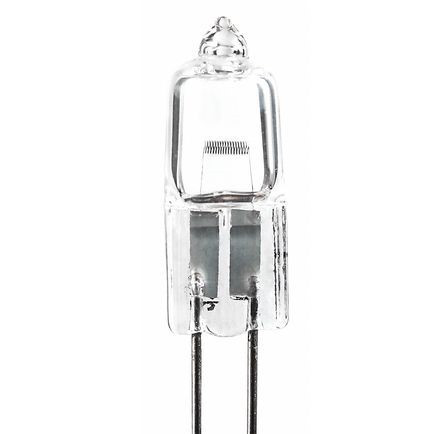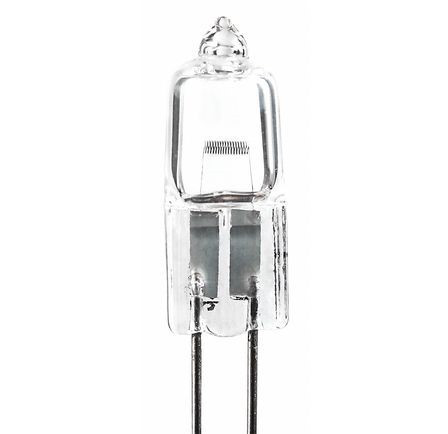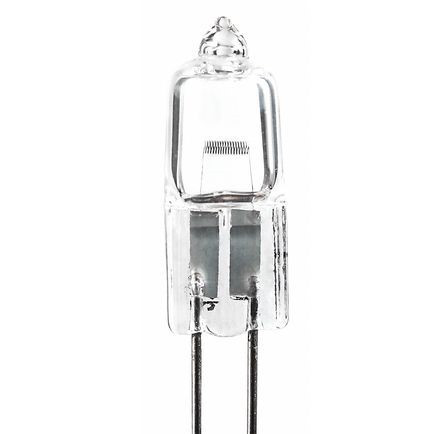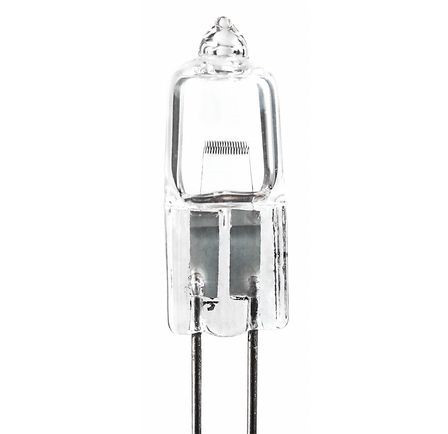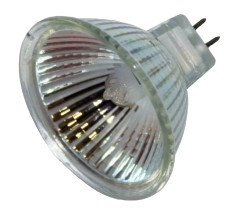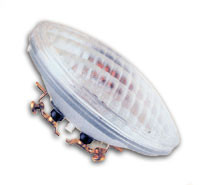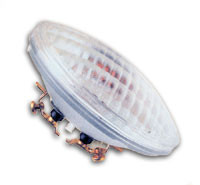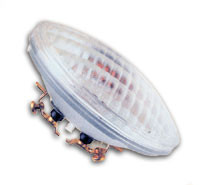Choose the best Landscape Low Voltage Light Bulbs for your home
As a home or business owner, you appreciate the aesthetic value and practical benefits of outdoor landscape lighting. Low-voltage light bulbs are a popular choice for outdoor lighting because they can be easily installed and offer energy-saving benefits. If you’re installing new outdoor light bulbs or replacing an existing setup, we can help you select the best low voltage light bulbs for your space.
Types of Low Voltage Light Bulbs
Best Pro Lighting sells these categories of low voltage landscape bulbs for outdoor lighting to illuminate your pathways, wells, garden, sitting areas, and small planter spaces:
Halogen/Incandescent Low Voltage Light Bulbs
While halogen bulbs look and operate differently than standard incandescent bulbs, they are still classified in the incandescent category and offer the advantage of brighter light and less energy consumption (25-30% less) than typical incandescent bulbs.
We offer these halogen low voltage landscape lighting bulbs:
Quartz Halogen Light Bulbs
JC BI PIN: We offer 10W, 20W, 35W, 50W 12V quartz halogen bulbs. They are excellent for use with our low voltage pagodas, floods, step, tulip, and mushroom lighting, and last up to an average of 2000 hours.
Low Voltage Halogen Spotlights
OSRAM MR16 20W, 25W, 35W, 50W 12V: Osram MR16 Halogen bulbs with clear glass lens cover, white flood with UV filter. Lasts up to 2000 hours. They’re perfect for directional lighting, up lighting, spot lighting, modern bullet or any low voltage fixture that uses an MR16 bulb.
Halogen Floodlight Bulbs
PAR 36 25W, 35W, 50W 12V: PAR 36 25W Halogen Flood Bulbs with new and improved fire-sealed technology. These low voltage landscape light bulbs are used for our low voltage well lights and last up to 3000 hours.
LED Low Voltage Landscape Bulbs
The efficiency of LEDs exceeds that of traditional incandescent bulbs by up to 90%, and their lifespan is up to 25 times longer. We offer this selection of LED low voltage bulbs:
- LED G4 3 WATT 12V AC/DC BULB: These LED G4 3W outdoor light bulbs can be used for our low voltage pagodas, floods, step, tulip, and mushroom lighting and last an average of 30,000 hours.
- 3 WATT, 6 WATT, 9 WATT MR16 12V LED Light Bulbslast for thousands of hours, so you won’t have to change them for years. These low voltage landscape light bulbs illuminate your garden with a beautiful, warm effect.
- 3.6 WATT LED PAR 36 Bulb 12V Bulbsare used for our low voltage well lights and are very power-efficient.
Benefits of Low Voltage Light Bulbs
Using low voltage bulbs for outdoor lighting is a great way to save money and energy. Here are some of the top benefits of low voltage lighting.
1. Energy Efficiency
a. Lower Power Consumption - Low voltage light bulbs operate at 12V or 24V, consuming less power than 120V bulbs.
b. Environmental Impact - These bulbs’ lower energy use reduces your carbon footprint compared to regular incandescent bulbs.
2. Cost Savings
a. Reduced Electricity Bills - They use less electricity to produce the same brightness as higher voltage bulbs.
b. Longevity and Lifespan - Low voltage bulbs last up to 10 times longer than incandescent bulbs before needing replacement.
3. Safety Considerations
a. Lower Fire Risk - There is much less chance of igniting materials compared to high-wattage bulbs.
b. Minimizing Electrical Hazards - Low voltage reduces the risk of electric shock if wires are damaged.
With so many advantages, it's easy to see why low voltage bulbs for outdoor lighting are so popular. Let’s see how the best low voltage bulbs can help beautify your outdoor space.
How Low-Voltage Light Bulbs Enhance Your Landscape?
Low voltage lighting’s versatility makes it a perfect fit for many different applications in your landscape. Here are just a few of the ways you can use low voltage bulbs:
- Uplighting trees is a great way to show off their impressive size and form at night. The narrow, concentrated beam that landscape low voltage outdoor light bulbs provide efficiently illuminates branches overhead without wasting any light.
- For pathways, low voltage lights spaced at intervals give off a warm glow. These lights can define winding routes without overpowering the landscape.
- To highlight around a well area, position halogen flood low voltage light bulbs to accentuate the stones and shape of the space.
With our low-voltage bulbs and beautiful fixtures, you can easily add charm to your property wherever you place your lights.
Why Low Voltage Bulbs are Good For Pathway and Garden Lighting?
You can benefit from using low voltage bulbs for your pathway and garden lighting because they offer a beautiful glow and low power usage. Your pathways and garden areas can be pleasingly lit, and the lights don't produce much heat, so they last longer. This saves you money on energy bills and bulb replacement costs.
Choosing the Right Landscape Low Voltage Light Bulbs
There’s a lot of terminology to sort through when it comes to low-voltage bulbs for outdoor lighting, but it doesn't have to be complicated. Let’s take a look at some of the basic terms and definitions to help you get started.
- Wattage refers to the amount of electricity a light bulb uses. It measures the power consumption of the bulb. Higher-wattage bulbs produce more light but also use more energy.
- Lumens measure the total amount of light output from a bulb. A higher lumen rating means the bulb produces brighter light. Lumen output ranges from 10–20 lumens for low-output decorative bulbs to over 2,000 lumens for very bright floodlights.
- Color temperature describes the color or warmness of the light emitted. It's measured in kelvins (K). Lower kelvin ratings, like 2700K-3000K, produce a warmer, more yellow/orange light. Higher kelvin ratings, like 4000K-5000K, produce a cooler, blue-toned white light.
Consider lower wattage for efficiency, a lumen output that provides sufficient brightness, and a color temperature that gives pleasing, natural illumination along pathways or within your garden or seating areas.
Environmental Impact of Using Low Voltage Light Bulbs
What’s great about low voltage bulbs is that they use less fossil fuel to power them. Additionally, low voltage bulbs last significantly longer than other types. This reduces waste and the resources needed to manufacture new bulbs. They also don't contain hazardous materials like mercury, making disposal safer.
Where to buy the Best Low-Voltage Outdoor Light Bulbs?
Best Pro Lighting offers an incredible selection of low voltage light bulbs, including LED and halogen bulbs. Our wide range of lighting options means that we have the perfect bulb to illuminate your front and rear pathways, barbecue and patio spaces, garage areas, gardens, seating areas, and more.
Add beautiful and energy-efficient lighting to your outdoor spaces with Best Pro Lighting. Get the lowest price guaranteed on low voltage light bulbs! If you need help, please contact us or call us TOLL FREE: 1 (888) 882-4823. Free shipping for US orders over $75!
Frequently Asked Questions for Low Voltage Light Bulbs
Q. Why does light bulb voltage matter?
A. The voltage of a lightbulb determines the electrical potential across the bulb's filament. This influences its temperature and consequently the intensity of the light emitted. If you use a lightbulb with the incorrect voltage, it won’t offer enough light and can lead to premature burnout and safety hazards.
Q. What is the lowest voltage for a light bulb?
A. The lowest voltage for a lightbulb available today is 12-volts. Typically, these low-voltage bulbs are used in a landscape or outdoor setting. The highest voltage available for interior settings is typically 100 to 120-volts.
Q. Are all LED bulbs low voltage?
A. No, not all LED bulbs are low voltage. LED bulbs are designed to operate efficiently across various voltages, including standard household voltages like 120V or 240V. While there are low-voltage LED bulbs available, these are most commonly used in landscape lighting or specialty applications.
Q. How do low-voltage bulbs differ from standard ones?
A. Low-voltage light bulbs differ from standard ones primarily in their operating voltage. Standard incandescent or LED bulbs typically operate around 120V or 240V voltages, while low-voltage bulbs function at lower voltages, generally 12V or 24V.
Q. Are low-voltage bulbs more energy-efficient?
A. Yes, low-voltage bulbs are generally considered more energy-efficient because they consume less power and draw less energy. However, to be most energy-efficient, individuals should strive to find low-voltage bulbs that are also LEDs since these consume less power to produce the same amount of light as their incandescent counterparts. This efficiency, coupled with the longer lifespan of LED bulbs, makes low-voltage lighting options a sustainable choice, offering both energy savings and reduced environmental impact compared to traditional, higher-voltage lighting solutions.
Q. What are the advantages of using low-voltage light bulbs?
A. Low-voltage light bulbs offer several advantages:
- They are often more energy-efficient, reducing power consumption and operating costs.
- They provide greater safety, especially in outdoor settings, as lower voltages pose a decreased risk of electric shock.
- Low-voltage bulbs are popular in landscaping due to their design flexibility and ability to create subtle, customizable lighting effects.
These bulbs typically have a longer lifespan, and their reduced environmental impact makes them a sustainable choice.
Q. How long do low-voltage light bulbs typically last?
A. Low-voltage light bulbs, especially those utilizing LED technology, often boast an extended lifespan. On average, they can last anywhere from 20,000 to 50,000 hours of use.
Q. What happens if you use the wrong voltage bulb?
A. If the bulb receives a higher voltage than recommended, it may produce excessive heat, leading to a shortened lifespan or even immediate burnout. However, a voltage lower than recommended can result in inadequate illumination, annoying flickering, or inconsistent performance. In both cases, there's a risk of electrical hazards, including damage to the bulb, fixture, or the overall electrical system.
Q. What does Type A mean on a light bulb?
A. Type A on a light bulb refers to a specific bulb shape and is part of the classification system established by the National Electrical Manufacturers Association (NEMA). Type A bulbs are characterized by their traditional pear shape and are some of the most common lightbulbs used in household fixtures today.
Q. What is the most common LED voltage?
A. The most common household LED voltage is the 120V lightbulb. However, within low-voltage systems like those found in outdoor lighting, bulbs are typically 12V to 14V.
